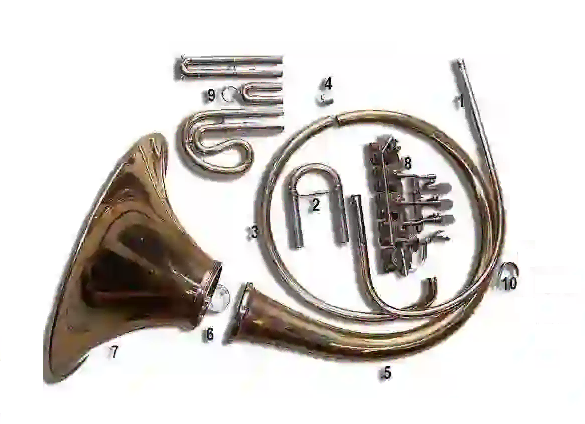Construction and function of the Horn - Philipp Dangas
Construction and function of the Horn
- Mouthpipe
- Tuning
- yoke
- Stem
- Screw
- connection
- Bell
- Machine
- Valve arches
- Finger hooks
The tube of the horn, which is wound in a circle, is made of brass. It has a diameter of about 32.5 cm. In its initial course, including the auxiliary tube, the valve system is slender and cylindrical. There is a short cone just behind the mouthpiece. Only after the falls does it become more and more conical. The mouthpiece has the shape of an elongated and narrow funnel.
The 3 tone lowering valves are operated by the player with the 2nd, 3rd and 4th fingers of the left hand. The right hand is inside the falls during play. The player regulates the precise intonation of the instrument by raising or withdrawing the wrist. At the same time, this function of the right hand is of the greatest importance for the development of the typical "French horn sound".
The overall tuning of the instrument can be corrected with the help of the main slide and the tuning slides. There are versions as F, Bb or, more rarely, Eb horn. If a horn consists of 2 tubes, it is called a double horn. Normally this is an F and a Bb horn, but there are also double horns in Bb/high FA
Download size: 135 kilobytes
Table summary of the functional principle of the brass instruments
Mouthpieces, tubes, bells and valves are briefly described. In addition, the term overblowing technique is defined.
The components of the horn in F in great representation

- Mouthpipe
- Tuning
- yoke
- Stem
- Screw
- connection
- Bell
- Machine
- Valve arches
- Finger hooks
Internal search function
| Name | Value | Delete |
|---|